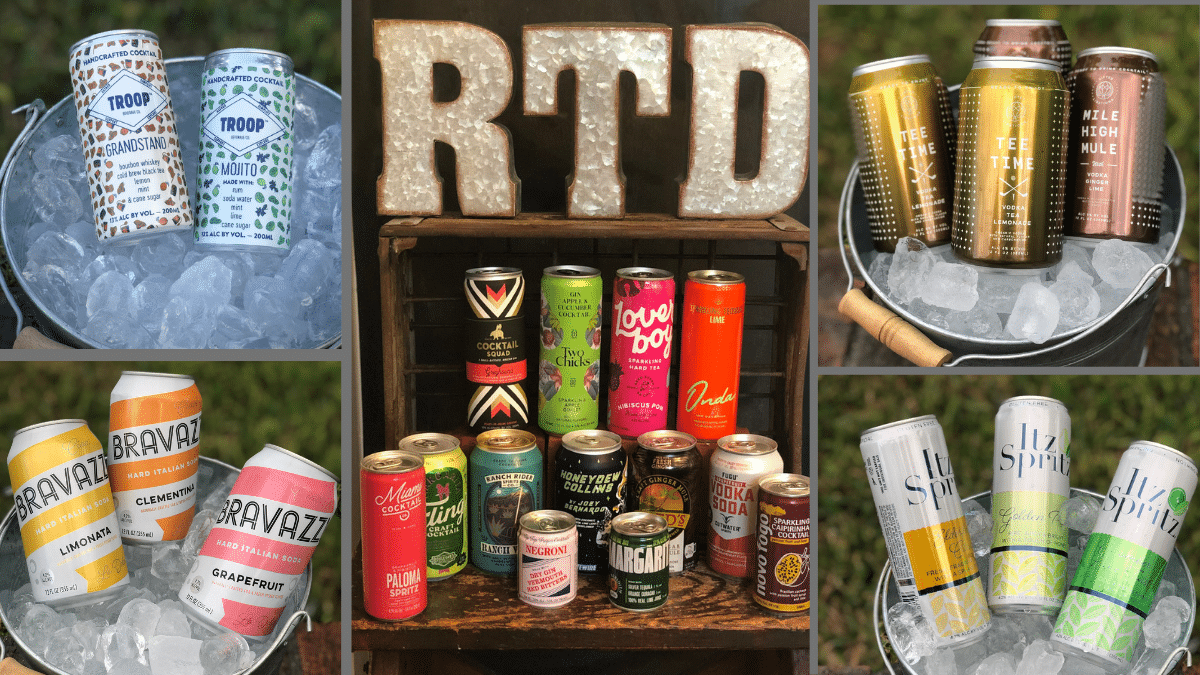
Premiumisation and ABV to drive RTD growth towards $40bn by 2027
The Ready-to-Drink (RTD) category is on track to reach a remarkable milestone, with new research from IWSR projecting a $40 billion sales figure by 2027 across ten key markets. While this forecast indicates a slowdown compared to previous years, with a growth rate of +12% in volume anticipated between 2022 and 2027, it’s crucial to dissect the factors driving this development. Let’s delve into the insights and quotes from experts in the field.
The key markets under examination in the IWSR RTDs Strategic Study 2023 include Australia, Brazil, Canada, China, Germany, Japan, Mexico, South Africa, the UK, and the US, which together accounted for 83% of global RTD consumption with a total value of US$33.9 billion in 2022.
“Growth expectations for RTDs across the ten key markets have halved over the past year to a forecast volume CAGR of +2% between 2022 and 2027,” states IWSR. However, excluding hard seltzers, RTD volumes are expected to grow at a more robust CAGR of +5% during the same period.
Susie Goldspink, Head of RTD Insights at IWSR, explains, “Growth is slowing in an increasingly mature global RTD category, but opportunities persist in the cocktails/long drinks space and for premium-plus products that prioritize consumer-forward cues such as RTD base, ABV, and flavor.”
One significant driver of this growth is the premiumization trend, which is taking multiple directions. It encompasses premium formats, shifts in ingredients, and the addition of functional features, all of which provide consumers with distinct options. Goldspink adds, “Although the pace of innovation has slowed, the effectiveness of new launches has improved, as producers are more strategic and targeted in their product launches.”
As the RTD category evolves, there’s a notable shift from lighter to fuller flavors, and brand owners are increasingly focusing on products with higher Alcohol by Volume (ABV). Approximately 32% of RTD consumers now consider alcoholic strength when selecting a product.
IWSR’s research reveals that consumers are drinking RTDs more frequently and exploring a greater number of sub-categories. The proportion of RTD consumers drinking RTDs more than once a week increased from 39% in 2022 to 43% in 2023.
Furthermore, 63% of consumers reported that they now consume two or three RTDs on the same occasion, and 58% said they consume from a repertoire of three or more RTD sub-categories. This signifies a diversification of tastes and preferences within the RTD market.
Interestingly, the influence of brand names in consumers’ choice of RTDs is diminishing, with only 29% considering it important. This trend aligns with the trajectory of craft beer, where consumers increasingly base their decisions on factors like flavor and ABV, rather than relying solely on a brand name.
However, IWSR suggests that recent co-brand launches from established names could counteract this decline. Partnerships between marquee companies offer the reassurance of a trusted name and restore the importance of branding in the RTD market.
An example of such a successful collaboration is the launch of “Jack & Coke,” a joint venture between the Coca-Cola Company and Brown-Forman. Brown-Forman CEO Lawson Whiting praised the launch, stating that it was the most successful in the company’s history in the United States.
Recently, the Coca-Cola Company announced its plans to release an “Absolut & Sprite” RTD in 2024. The company’s Chairman and CEO, James Quincey, expressed excitement about the new venture and the expansion of their presence in the alcohol ready-to-drink space.
While vodka remains the most popular spirit base for RTDs, there is a notable shift in consumer preferences. The decline in popularity of gin is opening the way for tequila to advance in the rankings.
The RTD market is poised for substantial growth, driven by consumer demand for higher ABV products, premiumization, the rise of long drinks, and innovative functional ingredients. As the industry matures, it’s evident that consumers are seeking variety and flavor diversity, which, coupled with the evolving role of branding, makes for an exciting and dynamic market landscape.




Comment
No comments found.